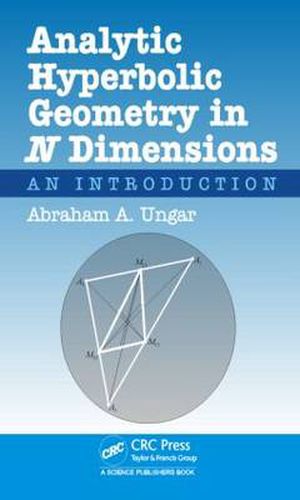Readings Newsletter
Become a Readings Member to make your shopping experience even easier.
Sign in or sign up for free!
You’re not far away from qualifying for FREE standard shipping within Australia
You’ve qualified for FREE standard shipping within Australia
The cart is loading…






The concept of the Euclidean simplex is important in the study of n-dimensional Euclidean geometry. This book introduces for the first time the concept of hyperbolic simplex as an important concept in n-dimensional hyperbolic geometry.
Following the emergence of his gyroalgebra in 1988, the author crafted gyrolanguage, the algebraic language that sheds natural light on hyperbolic geometry and special relativity. Several authors have successfully employed the author’s gyroalgebra in their exploration for novel results. Francoise Chatelin noted in her book, and elsewhere, that the computation language of Einstein described in this book plays a universal computational role, which extends far beyond the domain of special relativity.
This book will encourage researchers to use the author’s novel techniques to formulate their own results. The book provides new mathematical tools, such as hyperbolic simplexes, for the study of hyperbolic geometry in n dimensions. It also presents a new look at Einstein’s special relativity theory.
$9.00 standard shipping within Australia
FREE standard shipping within Australia for orders over $100.00
Express & International shipping calculated at checkout
The concept of the Euclidean simplex is important in the study of n-dimensional Euclidean geometry. This book introduces for the first time the concept of hyperbolic simplex as an important concept in n-dimensional hyperbolic geometry.
Following the emergence of his gyroalgebra in 1988, the author crafted gyrolanguage, the algebraic language that sheds natural light on hyperbolic geometry and special relativity. Several authors have successfully employed the author’s gyroalgebra in their exploration for novel results. Francoise Chatelin noted in her book, and elsewhere, that the computation language of Einstein described in this book plays a universal computational role, which extends far beyond the domain of special relativity.
This book will encourage researchers to use the author’s novel techniques to formulate their own results. The book provides new mathematical tools, such as hyperbolic simplexes, for the study of hyperbolic geometry in n dimensions. It also presents a new look at Einstein’s special relativity theory.